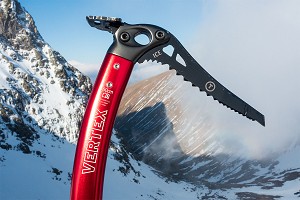
The new version of Edelrid's most technical axe, the Rage, is well-made, well-designed, and a lot of fun to climb with, says Toby Archer.
There is always something exciting about new ice tools coming on to the market. In a market where lots of gear is updated every year, ice tool designs tend to play out on a longer timescale, and successful models might go a decade without major update. Your tools are so fundamental to what you are doing, and if a pair of axes works for you then you may well become attached to them emotionally as well as by your bungee leash!
The first generation of the Edelrid Rage must be well over a decade old, and has featured in a couple of UKC roundups of technical axes over the years. The fact that the original stayed in the product line for so long suggests the fundamentals were right from the start, but clearly plenty of thinking has gone into the evolution of the new generation of the Rage.
The availability of the new Rage does still seem limited but Edelrid got UKC this review pair of tools in the late spring of last year - so I wanted to get a review out as soon as possible to help anyone considering buying a new pair of tools this winter, when presumably the Rage should be in the shops. This should be considered a preliminary review: weekends, winter conditions and an absence of family obligations have not always aligned.
Nevertheless, I have used the new Rages drytooling, for a classic mid-grade British mixed route (frozen turf, blobs of ice, rock and plenty of snow) and on pure water ice - albeit of a moderate grade. They have even seen me up the normally-disintegrating slag heap of briefly-frozen shale that is Mam Tor, but the less said about that dubious activity, the better. I can't say much about things like long term durability, but after over three decades of regular winter climbing, I feel I have a decent feel for how the Rage climb, and so far that's a really positive feeling.
What's in a name?
Before getting onto more important matters, one thing about the Rage that I don't like is simply the name. There has historically been macho bullshit in winter climbing and it is still noticeable that women feature less prominently amongst top winter climbers than in other areas of the sport. An ice tool is a tool, not a weapon. If you are raging when you are climbing, you're probably doing something wrong. The Rage's sister tool (well, ok, brother tool might be a better term) is called the Riot - I'm not sure that's much better. The Rages are a really cool colour though, so I half-forgive them.
Weight and build
The new Rage is quoted at 650g. I've measured the weight to be: 619g (mixed pick and micro hammer); 666g (with pick weights); 677g (with pick weights and small hand "spacer"). By comparison with similarly technical models, the upcoming DMM Cortex is said to weigh 589g, while the Petzl Nomic comes in at 585g. The Rage has never been one of the lighter axes on the market, but it has always felt solid.
There is one rivet visible through the rubber of the upper handle holding the offset lower handle to the main shaft of the tool. This is of course a potential weak spot but it is how the majority of tools are made. Likewise, and perhaps more importantly, at the other end of the shaft, the head is attached with a single rivet. Again, the majority of tools seem to use one rivet (along with the interference fit of pushing the head into the shaft).
I have had at least eight different pairs of technical tools over my climbing career, and have never had a problem with a 'wobbly head'. Of those tools I think only the famously robust DMM Switch used a double rivet. But wobbly heads have been an ongoing issue for owners of another model of performance ice tool, showing it can happen. Edelrid seem to be happy that the tool is robust enough for high standard ice and mixed as it is, and the wobbly head syndrome seems to have mainly afflicted only one model from another manufacturer, I've never heard on anyone having issues with the original model of the Rage over the last decade - almost certainly a good sign. "German engineering" is of course something of a cliche, but so far the new Rage shows every sign of living up to that legacy!
Handle design
The Rage is a modern, ergonomic ice tool with an offset-lower handle. The primary handle is of course the lower one; this is nicely shaped and covered in a grippy rubber. The base of the handle, the pinky rest, is not adjustable but perfectly comfortable for me whether in thin dry-tooling gloves or thick insulated mountain gloves. The old Rage had quite a small handle. Having lent the new version to other climbers at Masson Lees, both beefy blokes and smaller women have used the tools, and no one has said that the handle or pinky rest either felt too big or too small for them - so overall I think Edelrid have found a happy medium with the new version.
The handle size can be adjusted by installing the included spacer to enable smaller hands to use it, or when climbing with thin gloves. This is a plastic device that clamps to fill some of the space at the top of the offset lower handle; I believe that the new BD Reactors have a very similar attachment as well.
These were described in a recent UKC forum discussion, on new tool designs, as "pointless" and "doing nothing". At first I was inclined to agree, but after some reflection I think I see what Edelrid (and BD) are doing here. I don't actually need these adaptors: if I am holding the tools with bare hands, my hands fit in the smaller space, then as soon as I wear any gloves it makes the handles too small. But for people with smaller hands, they may well help.
Trying to explain how to swing an ice tool is actually really complicated - once you've done it a lot, you sort of know when it feels right and when it doesn't. But you do need relaxed wrists when swinging: at the end of the swing I suppose there is a slight 'flick' of the wrist, so the tool continues the swing a little more than your whole arm. It is at that moment where if you are relaxed enough the tool is, just to a tiny degree, "rolling" over your index finger and that's why some people want a handle small enough to feel the top of the handle against the upper edge of your index finger. For smaller handed people that would not be possible without this adaptor taking away some of the space. As noted above, I don't need them, so took them off immediately and then didn't really think about them again until writing this - but for some people they might make the Rage's handle feel more secure.
The upper handle on the curved shaft of the Rage is coated in the same grippy rubber as the lower handle. No need to mess around with self-amalgamating tape - the grip as it comes is easy to hold and warmer than uncovered aluminium. The pinky-rests of both the upper and lower handles have low profile steel teeth that aid stability of the tool when up against ice and offer protection to both your hand and the rubber of the handle on mixed. The spike at the base of the tool is sharp enough to work stabilising yourself when walking on easy angled ice but not so sharp that looking up at your tool on a marginal hook or in a very thin ice placement seems dangerous to your eyesight or your model-like good looks! The best thing about the spike is that it is rated to 8 KN, so if your leashes are up to it and you have placed the Rage well, it could literally catch you if you fall.
Head design
The head itself uses a simple two bolt design to hold on the blade and adze, hammer or blank at the other side. A 5mm allen key, supplied with the tools, is all that is needed to change blades and it can be done in a minute or so, but seems very secure once done up. It would be easy to slip the allen key into your pack just in case you ever needed to tighten the head or change a pick whilst on a trip.
The Rages came with a micro hammer and Edelrid's mixed pick. The hammer is small but I used it to remove turf hooks on the first route I climbed with the tools and, while not an old-school large hammer, it has worked well enough and ensured you are not hammering with the softer aluminium of the head. A larger hammer and an adze are available separately.
Picks
My pair of Rages came with Edelrid's Mixed Blade, a type 2 technical pick. It looks like that this is going to be the standard blade for these tools, and that makes plenty of sense here in the UK. The mixed blade swings well into ice, although I've found it a little sticky when removing it. In the old days when I lived in a much icier land, any new pick that was not already rounded on the top of the pick tip (BD blades are actually great in that they come pre-shaped like this) would immediately be filed down to round off that sharp angle. I haven't done that on the Rages yet, and that almost certainly accounts for the stickiness. It's really only noticeable with water ice though, earlier in Wales, where almost all the non rock placements were turf, I hadn't noticed at all.
The mixed blade has some serrations on the top of the pick where it goes into the tool's head - these are for providing more grip when the axe is inverted and being pulled down on in stein-pull moves, something I have actually done when dry-tooling at Masson Lees, and it worked! These serrations are a bit uncomfortable if you are holding the head of the tool and using the bottom spike for balance, but only if you are not wearing gloves: when actually using the Rages to access a route in the mountains I forgot I had even noticed this previously. The blade also has a serrated section that extends down over the "neck" of the tool. This provides protection to the top of the shaft and will give a bit more grip when hooking over large flakes or boulder-chokes and the like.
The quality of picks seems really high - after climbing thin ice with them, a day of dry tooling purely on rock, and doing a Welsh mixed route where they were thwacked into a lot of turf and hooked on or around a lot of rock holds, they have hardly lost any of their original shape or sharpness. But, if the mixed blade isn't going to work for your projects, Edelrid also sell a type 1 "Ice Blade" and a type 2 "Alpine Blade".
The tools also come with removable pick weights. I took them off immediately as my first day out on the tools was dry tooling in warm spring sunshine. I haven't put them back on yet, and can't say I've felt the tools need them at all when ice climbing. I've found the Rage has a really easy, natural swing without the weights on. I've been climbing for the last decade using either my pair of Black Diamond Vipers or DMM Switches. Although with its offset lower handle the Edelrid Rage is closer in design to the Switch, swinging them into ice they feel more like my much loved Vipers. I have climbed a lot of ice with the Switches, but somehow I always felt they excelled on mixed, while the Viper has a better swing for the type of ice I can climb - sub-vertical, or only vertical for shortish bits! The Rage is a lighter tool than the Switch, so I suspect that might be significant here.
Summary
I've said a lot for a preliminary review but I make no apologies for being excited by the new Rage. So far this seems a well -designed and well-made tool, and it's certainly fun to climb with. Perhaps with the exception of days out soloing grade I and II ground, I can't see myself wanting to climb with any other tool for the time being, and my experience so far makes me want to climb plenty more routes with them! I will report back as I do.
For anyone wanting to see the Rage being used on much harder routes than I will ever climb, check out the Instagram account of South Tyrolean mountain guide Simon Gietl. He is sponsored by Edelrid so of course he would be using them, but you can see he is climbing very impressive mixed and pure ice routes with Rages, and they are clearly not slowing him down. Gietl is quoted in this article - it is advertorial but has some interesting comments about what the designers were trying to achieve with the new design.




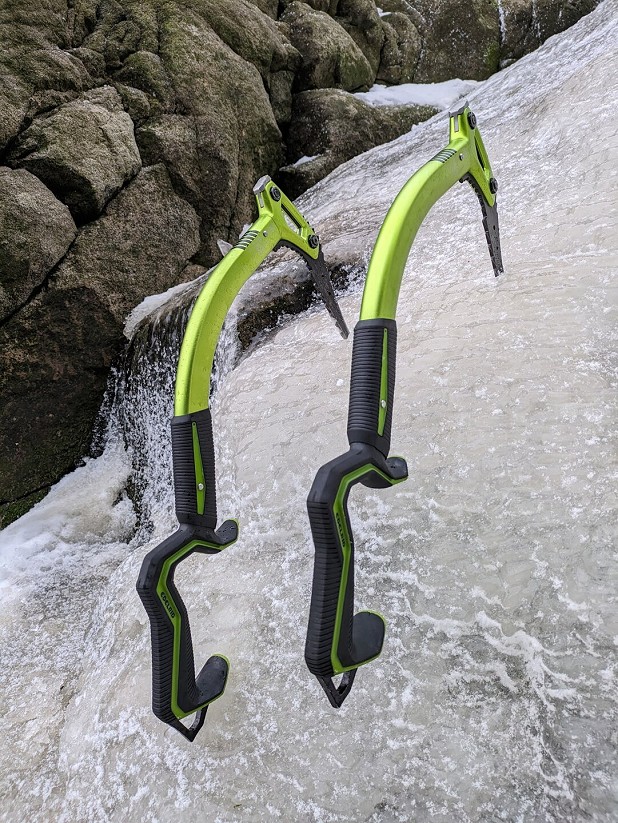

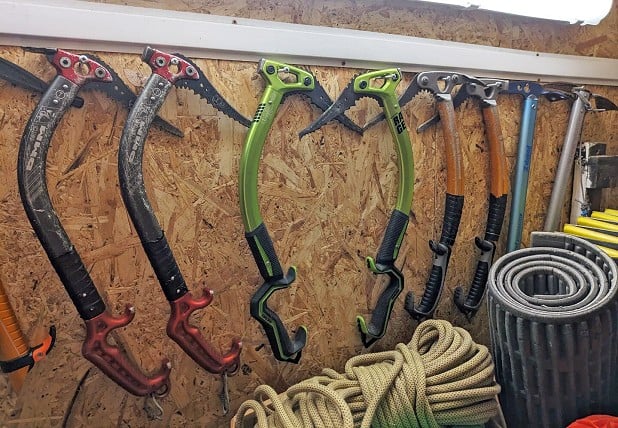

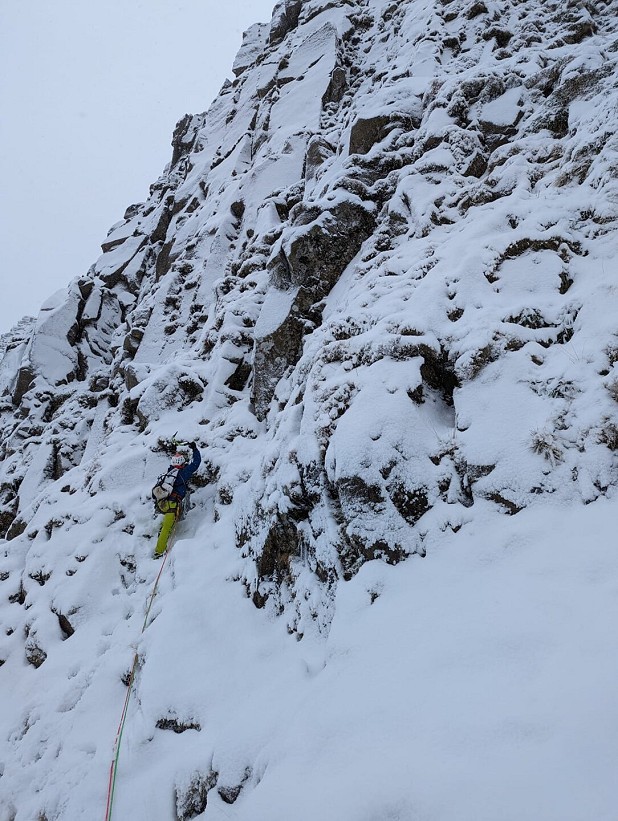
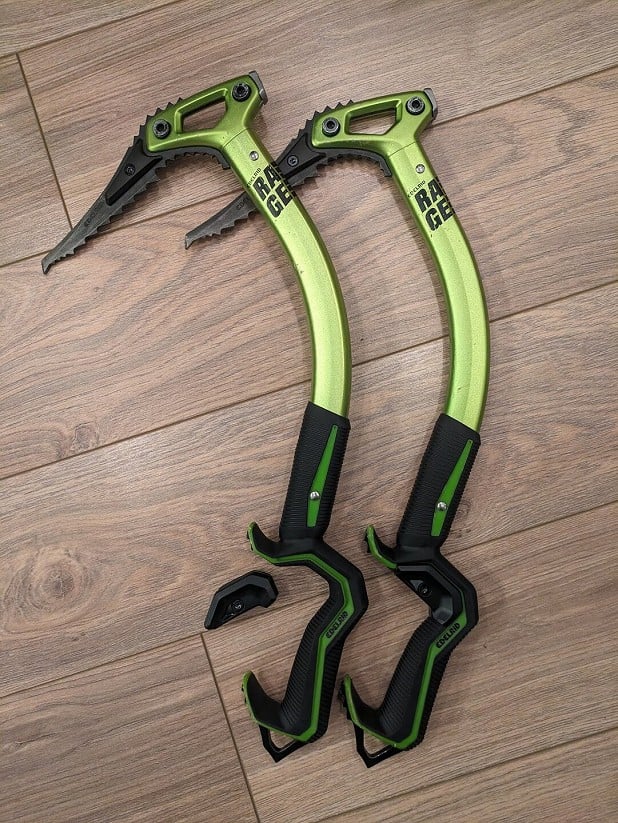
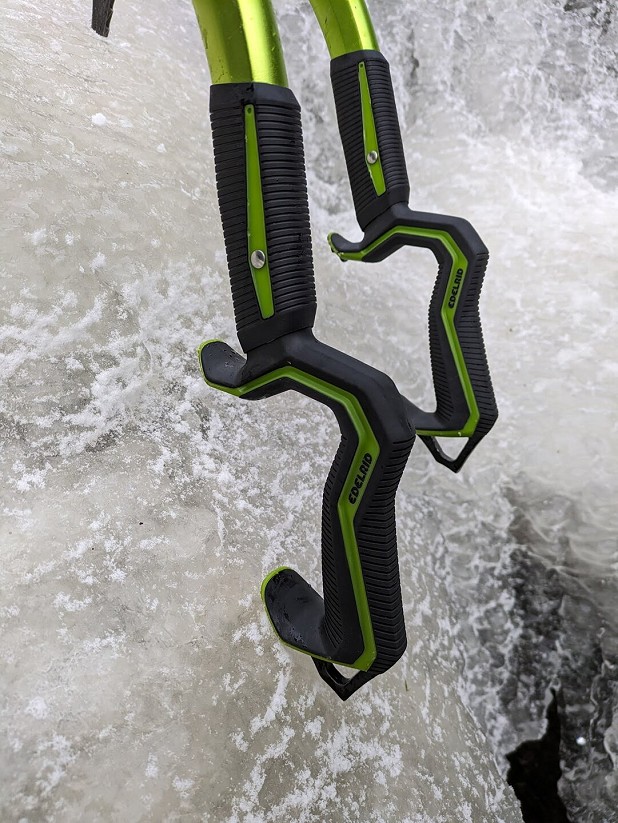

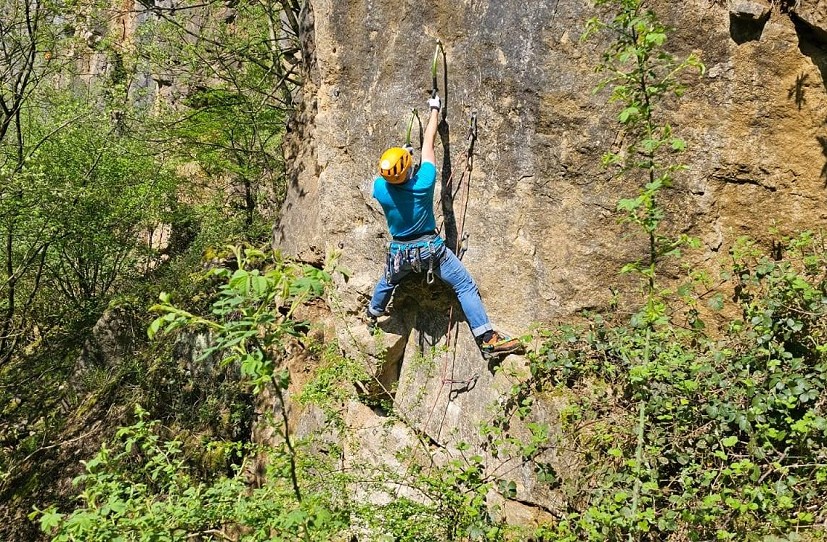
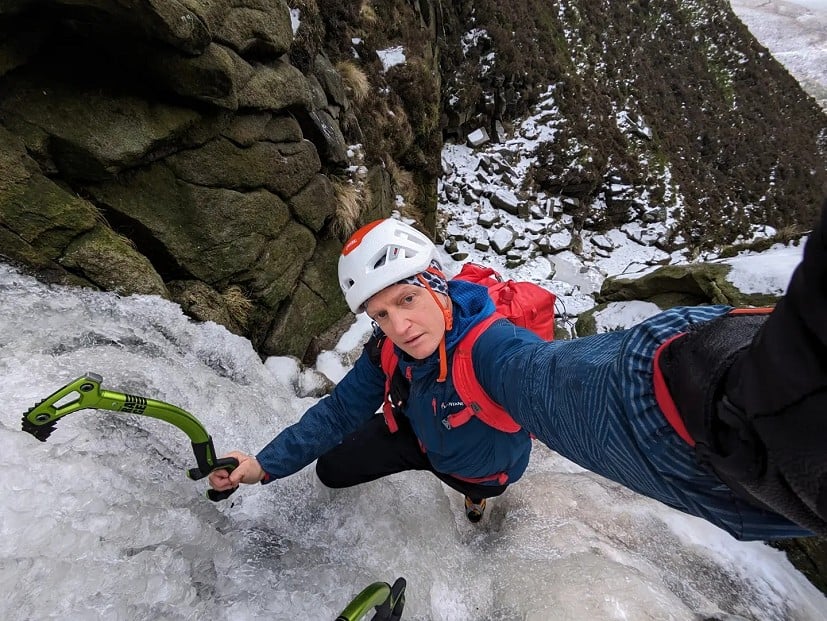
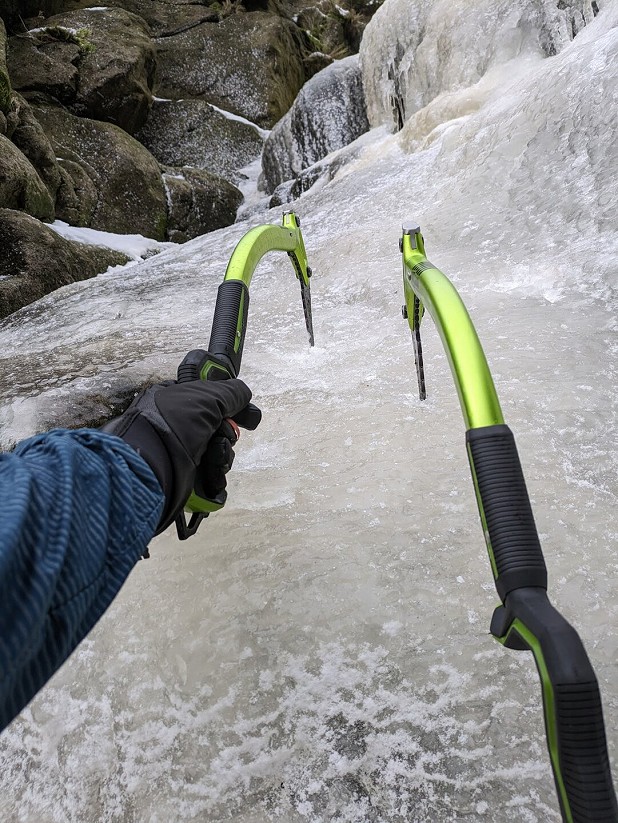
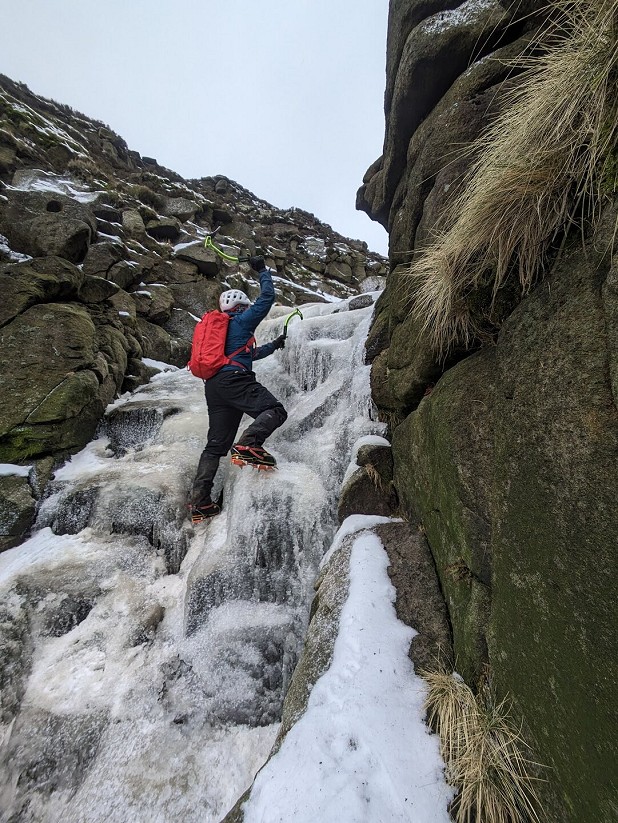
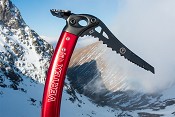


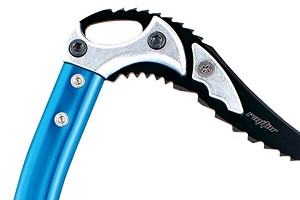
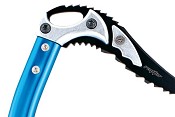
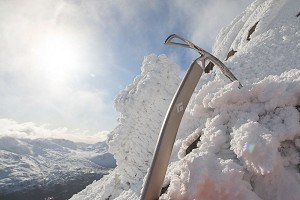
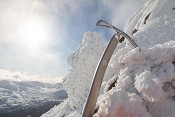






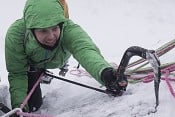


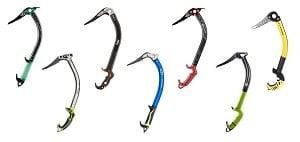

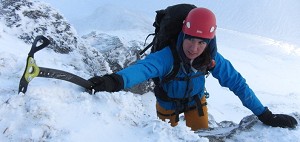




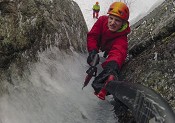
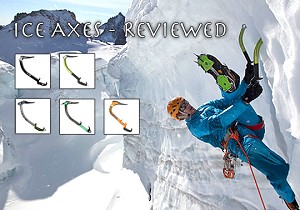
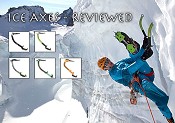
Comments
Nice review Toby, I certainly enjoyed using them at masson , comparing them to similar tools, ie ergonomics, x dreams etc they felt very similar in terms of stability on edges, hand and wrist position so maybe it's more down to orange or green? Would be interesting to see how they compare on ice ( if they fancy a holiday in Canada next week I'd be more than happy to find a space for them ! 😉)
Cheers Neil. I should have got Dan to add to the photo caption that it is you stylishly stein pulling on the Rages. There were some pictures of me on the same move, but I was on a very tight top rope so it didn't look nearly as cool. :-)
I'm hoping to get up to Scotland the week after next when it's half term, so I'm afraid the Rages will be occupied. Otherwise, I'm sure they would have enjoyed a Canada trip! The top corner on the tip of the blade does need rounding off though before they do any serious ice. Not as sticky as some new blades, but definitely a wee bit sticky as they are.
Haha, hope you find good conditions!!
I think it'd be useful to let us know the grades you used them on, sorry if I missed it.
D6 drytooling if I remember right - on a top rope for that one! The pictured drytool route I'm leading is D4 I think. IV,4 for the mixed route, and the ice route is Crowden Clough (Winter) (II), although a grade like I,3 might actually describe it better.
As I say in the review it's very much a preliminary review - I just haven't had chance to do more winter routes with them, but I wanted to get my initial impressions down before this winter had gone, just in case anyone was looking for new tools and considering these - I couldn't find any other reviews of them in English, and I don't think in other languages that Google searches either. I'm not sure , but it may be that Edelrid is having some issues with production or distribution though, as a number of UK shops that list them don't seem to have them in stock yet.